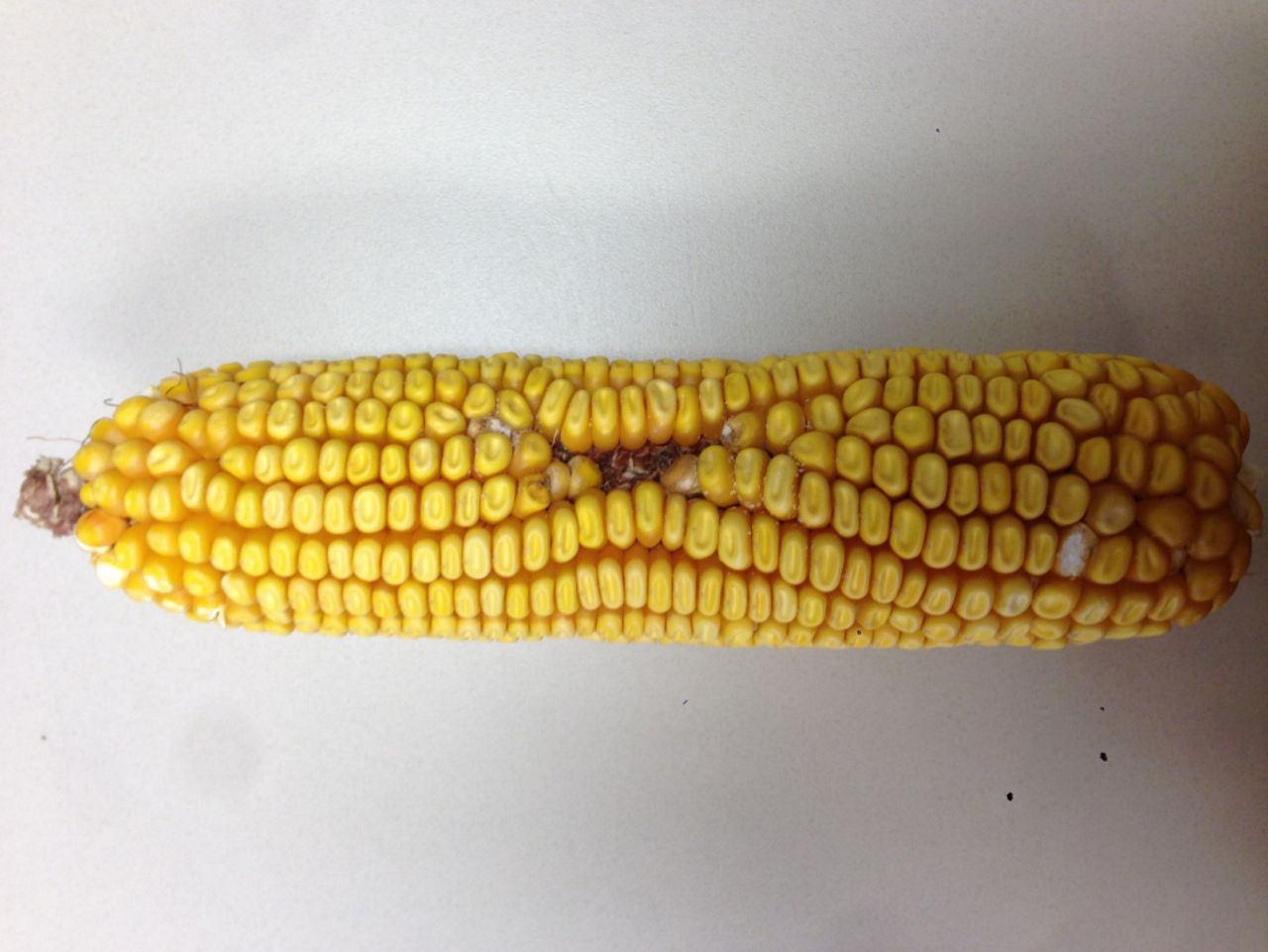5 MIN READ
Mid-Season Hail-Damaged Corn
June 25, 2020
Mid- to late-season hail storms can be damaging to corn because:
The growing point can be damaged.
Leaf area can be reduced through shredding and stripping.
Stalks and ears can be bruised by hail stones.
Wounds can open the plant up for fungal disease development.
The plant population can be reduced.
The effect on yield potential is dependent on the severity of each of these factors. After V6 growth stage (6 exposed leaf collars), direct hits on the growing point, now above the soil surface, can damage or kill the growing point. Ear initiation begins in the growing point; therefore, direct hits by large hailstones can damage immature ears and ultimately result in lower yield potential. For more information on early-season hail damage in corn please read Early Season Hail Damage.
Yield Loss Estimation
Estimating the potential yield loss from mid- to late-season hail damage can be challenging. Evaluations should not be made until 5 to 7 days after the storm to allow for new growth and any recovery. Replanting severely-damaged, mid-season fields is generally not an option because the remaining growing season will be too short for a replanted crop to reach maturity. The USDA Federal Crop Insurance Corporation (FCIC) uses information based on the number of corn leaves with tips pointing toward the ground to determine growth stage. The traditional growth stage method counts leaves once the leaf collar is visible. The FCIC method of counting can result in the plants having two or more leaves than the leaf collar method if evaluations are necessary before tassels emerge. Plant defoliation results in the loss of photosynthetic leaf area. The severity of the loss depends on the amount of leaf area removed and the plant’s growth stage (Figures 1, 2, and 3). Shredded leaves can still photosynthesize; therefore, appearance can be misleading. Table 1 shows the estimated loss of yield potential for 20, 40, 60, 80, and 100% defoliation based on the FCIC leaf count method. Note that the estimated yield loss increases by leaf stage until tasseling and then begins to decline after tasseling.
Stand counts can provide an estimate of viable plants per acre. If the hail is severe (Figures 2 and 3), plant populations may be dramatically reduced. To estimate potential yield using stand and kernel counts, please refer to this article on Evaluating Corn Yield Potential for more information. Defoliation should be accounted for when taking stand counts to help provide a reasonable yield estimate.







